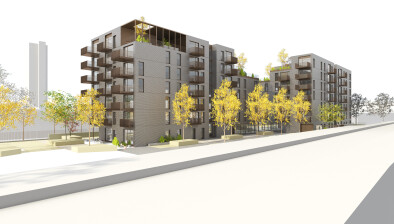Savills: Growth in Scottish residential land values overtakes UK
The unceasing demand for Scottish development land has driven strong growth in land values and high levels of investor activity over the last quarter, according to a new report from real estate advisor Savills.

Ben Brough, head of residential development at Savills
Indeed, growth in Scotland greenfield values reached 9.3%, the highest level of all UK regions.
Scottish land values in urban areas has also showed significant growth of 6%, just behind the UK figure of 6.8%. Activity levels have remained robust across all UK regions, with significant competition for sites and a high number of bids received per site. The shortage of land supply, in particular for sweet spot sites up to 200 units, has heightened competition and fuelled value growth.
Ben Brough, head of residential development at Savills, said: “Due to a combination of accelerated house sales, industry concern over emerging planning legislation and a shortage of deliverable larger scale sites, volume housebuilders are now forced to consider smaller lot sizes of say a minimum of 50-60 units+ (c.5 acres), and often in more secondary locations. In recent years, 90 – 100 units+ (c.10 acres) would generally have been the minimum size of interest to this group. SMEs and private housebuilders are finding themselves in fierce competition with the cash-rich PLCs at closing dates. As a result, values for sites in the modest 50 – 75 unit bracket are being pushed upwards.
“Savills most recent statistics reveal an uptick in the number of housebuilders bidding on sites that were non-conditional on planning permission: a recent launch in Livingston attracted 13 bids, significantly ahead of our average in the region of 5-7 offers.
“Within this were a number bids on an unconditional basis, and with more aggressive payment profiles. Meanwhile, in the West, eleven bids were received for the former HMRC offices in Cumbernauld at a very competitive closing date, a good number of which were non-conditional: housebuilders will bid on this basis when the pressure is on for good, larger opportunities.”
He added: “Whilst Aberdeen has been slower to recover, we are also seeing a renewed energy there too: rising residential values and transaction levels are positively impacting sentiment among housebuilders.
“This is particularly the case in Aberdeenshire where rural sites have become much more accessible since the completion of the Western Peripheral Route. Indeed the ‘race for space’ effect is being felt Scotland-wide: a pattern of hybrid working has emerged since the pandemic, with consumers now seeking homes further away from city centres offices. This trend is rippling out to the development market and housebuilders are now prepared to pay much more for sites which would previously have been considered a secondary location.”
According to Lydia McLaren, Savills research analyst, this annual growth is exceptional and the highest it has been since 2014. At that time housebuilders were replenishing their pipelines following the Global Financial Crisis and increasing their output, supported by the economic recovery.
She commented: “Housebuilders are once again filling gaps in their land pipelines in order to progress their future growth strategies. The looming end of Help to Buy in April 2023, which has supported sales of newly built homes only, doesn’t appear to be having a material impact on the residential development land market with most of the major housebuilders planning for growth in completions post 2023.
“Although competition for land is likely to remain strong because of the supply demand imbalance, there is some future uncertainty around build costs and environmental requirements which have the potential to temper future growth in land values.”









